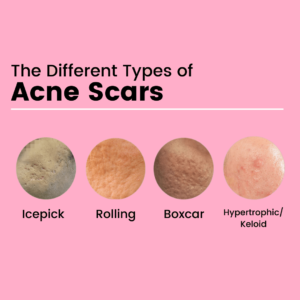Top 10 Insurance Chatbots Applications & Use Cases in 2024
Integration with CRM systems equips chatbots with detailed customer insights, enabling them to offer personalized assistance, thereby enhancing the overall customer experience. Chatbots have become more than digital assistants; they are now trusted advisors, helping customers navigate the myriad of insurance options with ease and precision. They represent a shift from one-size-fits-all solutions to customized, interactive experiences, aligning perfectly with the unique demands of the insurance sector. In this article, we’ll explore how chatbots are bringing a new level of efficiency to the insurance industry.
Beyond customer-facing chatbots, insurance providers can deploy chatbots to manage broker relationships. Chatbots can answer queries, especially if they are facing complex client inquiries or need an update on the status of an application. This insurance chatbot example sets a high standard — it features a concise FAQ section along with the approximate wait time and a search bar.
Receive Feedback and Complaints
Say goodbyeto intrusive forms and opt-in popups and engage visitors in natural conversations. Enable your ChatGPT-driven chatbot to communicate customers’ preferred languages, ensuring a seamless and localized experience for your international customers. Streamline insurance operations for enhanced productivity and faster customer service response times.
In this post, we want to discuss the benefits of insurance chatbots in particular and how potent they can be in solving clients’ problems or guiding them toward the right department. You’ll also learn how to create your own conversational bot and set it up for success. For instance, Zurich Insurance relies on a Claims Bot to help process home insurance claims. Customers are driven through a series of questions to narrow down their needs so the agent can respond to claims quicker than expected.
You can foun additiona information about ai customer service and artificial intelligence and NLP. Visitors are likely comparing your insurance to other companies’, so you have to get their attention. This is where live chat and chatbots prosper; you can proactively approach more potential customers directly on your website to create leads. Handovers are also possible at any time just in case customers need immediate human assistance.
Feed customer data to your chatbot so it can display the most relevant offers to users based on their current plan, demographics, or claims history. If you have an insurance app (you do, right?), you can use a bot to remind policyholders of upcoming payments. Adding the stress of waiting hours or even days for insurance agents to get back to them, just worsens the situation. Enhancing customer satisfaction is not the only benefit, as insurance companies can more effectively cross-sell and upsell their offerings, further contributing to their business growth.
The chatbot provides answers to insurance-related questions and can direct users to the relevant GEICO mobile app section if necessary. For instance, if a customer is seeking roadside assistance and is unable to find the relevant menu within the app, Kate will guide the user to the appropriate menu. The necessity for physical and eligibility verification varies depending on the type of insurance and the insured property or entity. A chatbot can assist in this process by asking the policyholder to provide pictures or videos of any damage (such as from a car accident). The bot can either send the information to a human agent for inspection or utilize AI/ML image recognition technology to assess the damage.
Customer Support Chatbot
Having a customer self-service center within your insurance chatbot is essential as it empowers your customers to instantly get detailed answers in a hands-off manner. The formatting also plays a big role — in this example, numbered points, quotes, links, and highlights enrich the text and make it easier to read. In short, your virtual assistant represents your company and is responsible for the first impression your brand creates with the newcomers. Because of that, you must ensure that it always acts according to your newest policies, sounds just like your real agents, and provides your clientele with the most relevant information. When it comes to conversational chatbots for insurance, the possibilities are endless. You can train them on your company’s guidelines and policies and employ them to solve various tasks — here are some examples.
Chatbots helped businesses to cut $8 billion in costs in 2022 by saving time agents would have spent interacting with customers. Below you’ll find everything you need to set up an insurance chatbot and take your first steps into digital transformation. If you are ready to implement conversational AI and chatbots in your business, you can identify the top vendors using our data-rich vendor list on voice AI or conversational AI platforms. In addition, AI will be the area that insurers will decide to increase the amount of investment the most, with 74% of executives considering investing more in 2022 (see Figure 2).
By interacting with visitors and pre-qualifying leads, they provide the sales team with high-quality prospects. To learn more about how natural language processing (NLP) is useful for insurers you can read our NLP insurance article. Brokers are institutions that sell insurance policies on behalf of one or multiple insurance companies. A chatbot simplifies this language into modern and easy-to-understand terms that more leads will appreciate when making a selection. Here are some of the more common use cases of chatbots for insurance you are bound to find as you shop around.
This interactive approach simplifies decision-making for customers, offering personalized recommendations akin to a knowledgeable advisor. For instance, Yellow.ai’s platform can power chatbots to dynamically adjust queries based on customer responses, ensuring a tailored advisory experience. A chatbot can also help customers inquire about missing insurance payments or to report any errors. A chatbot can either then offer to forward the customer’s request or immediately connect them to an agent if it’s unable to resolve the issue itself. Yellow.ai’s chatbots are designed to process and store customer data securely, minimizing the risk of data breaches and ensuring regulatory compliance.
Next Insurance launches Facebook Messenger chatbot to replace the insurance agent – ZDNet
Next Insurance launches Facebook Messenger chatbot to replace the insurance agent.
Posted: Tue, 21 Mar 2017 07:00:00 GMT [source]
One of the fine insurance chatbot examples comes from Oman Insurance Company which shows how to leverage the automation technology to drive sales without involving agents. Available over the web and WhatsApp, it helps customers buy insurance plans, make & track claims and renew insurance policies without human involvement. An AI system can help speed up activities like claims processing, underwriting by enabling real-time data collection and processing. Insurers can do a quick analysis of driver behavior and vehicle conditions before delivering personalized services to customers. Using a chatbot system for the automobile insurance sector can help improve user experience and service affordability.
Insurance chatbots are designed to comprehend and address customer inquiries promptly and precisely. These chatbots offer immediate and accurate information on insurance products, policy specifics, and claims processing. Claims processing is traditionally a complex and time-consuming aspect of insurance.
The chatbot currently handles up to two-thirds of the company’s inbound insurance queries over Web, WhatsApp, and Messenger. It serves customers with quotes, policy renewal, and claims tracking without any human involvement. It helps users with tasks such as finding the right insurance product and comparing different policies. In 2022, PolicyBazaar also launched an AI-Enabled WhatsApp bot for the purpose of settling health insurance claims. An insurance chatbot can help customers file an insurance claim and track the status of their claim.
But they only do that after they’ve gauged the spending capacity and the requirements of the customer instead of blindly selling them other products. Bots can be fed with the information on companies’ insurance policies as common issues and integrate the same with an insurance knowledge base. For brokers, insurance https://chat.openai.com/ chatbots streamline communication, enabling them to quickly access policy information, generate quotes, and facilitate transactions on behalf of their clients. Sensely’s services are built upon using a chatbot to increase patient engagement, assess health risks, monitor chronic conditions, check symptoms, etc.
Chatbots have transcended from being a mere technological novelty to becoming a cornerstone in customer interaction strategies worldwide. Their adoption is a testament to the shifting paradigms in consumer expectations and business communication. Is a responsive self-service portal that helps customers resolve their issues quickly.
Another chatbot use case in insurance is that it can address all the challenges potential customers face with the lack of information. Insurance chatbots collect information about the finances, properties, chatbot for insurance agents vehicles, previous policies, and current status to provide advice on suggested plans and insurance claims. They can also push promotions and upsell and cross-sell policies at the right time.
Only when bots cross-check the damage, they notify the bank or the agents for the next process. Smart Sure provides flexible insurance protection for all home appliances and wanted to scale its website engagement and increase its leads. It deployed a WotNot chatbot that addressed the sales queries and also covered broader aspects of its customer support. As a result, Smart sure was able to generate 248 SQL and reduce the response time by 83%.
This article explores how the insurance industry can benefit from well-designed chatbots. Genki is a health insurance solution for digital nomads, helping them receive the best care no matter where they are. Genki’s bot has a state-of-the-art FAQ section addressing the most common situations insured individuals find themselves in.
That will allow you to build a simple version of your desired outcome to test how it works with your agency’s team, stakeholders, and current clients. You don’t need to hire a high-powered software engineer or data analyst to onboard ChatBot’s fantastic technology. This is a visual builder that uses an easy-to-understand dashboard where all your information is kept. With ChatBot, you get 24/7 support and can pass on that same benefit to your clients. There is no dependence on third-party providers like OpenAI, Google Bard, or Bing AI. Everything is stored and processed on the ChatBot platform, increasing your data security and giving your stakeholders peace of mind.
As we’ve discussed, AI Assistants are most effective when it comes to automating routine and repetitive tasks. An insurance chatbot is a virtual assistant designed to serve insurance companies and their customers. From initiation to documentation Chat GPT and updates, it simplifies tasks and improves customer satisfaction. GEICO, an auto insurance company, has built a user-friendly virtual assistant that helps the company’s prospects and customers with insurance and policy questions.
Chatbots can help insurers save on customer service costs as they require less manpower to operate. Service performance is positively correlated with sticking to or letting go of the provided services[2]. Chatbots can offer customers a quote for their insurance without them having to spend time filling out long, complicated forms. You can train chatbots using pre-trained models able to interpret the customer’s needs. It allows computers to understand human language and respond in a way that is normal for humans. The conversation is not necessarily how they naturally communicate, but it should feel normal to make them feel at ease.
Instead of wasting hours running numbers or developing new marketing materials, AI provides a real-time solution so you can focus on developing your insurance network of leads. Chatling is an AI chatbot solution that lets insurance businesses create custom chatbots in minutes. When a new customer signs a policy at a broker, that broker needs to ensure that the insurer immediately (or on the next day) starts the coverage. You can foun additiona information about ai customer service and artificial intelligence and NLP. Failing to do this would lead to problems if the policyholder has an accident right after signing the policy.
With so much demand, having an integrated and informative insurance chatbot as part of your system only makes sense. If you want to grow engagement with existing customers and smooth out lead generations and your agency’s marketability, using chatbot technology is a surefire way to boost interactions. It’s designed to support marketers, meaning insurance agents can use it to create effective chat marketing campaigns. ManyChat can recommend insurance products, route leads to the correct agent, answer FAQs, and more. By automating routine tasks, chatbots reduce the need for extensive human intervention, thereby cutting operating costs. They collect valuable data during interactions, aiding in the development of customer-centric products and services.
A virtual assistant answers prospects’ and customers’ questions, triggers troubleshooting scenarios, and collects data for human agents to resolve complex issues. Agents will focus on providing relevant coverage and assisting consumers with portfolio management. Such focus is due to the use of intelligent personal assistants to streamline processes and AI-enabled bots to uncover new offers for customers. They’ll make customer contacts more meaningful by shortening them and tailoring each one to the client’s present and future demands. The role of AI-powered chatbots and support automation platforms in the insurance industry is becoming increasingly vital. They improve customer service and offer a unique perspective on how technology can reshape traditional business models.
Many times, it so happens that people are lured and trapped by sales agents, which ultimately leads to fraud. Chatbots are enabled by artificial intelligence that eliminates most probabilities of fraud. Insurance carriers can use chatbots to handle broker relationships in addition to customer-facing chatbots. Furthermore, chatbots can respond to questions, especially if they deal with complex client requests.
Some examples include accessing policy information, getting answers to frequently asked questions, and changing their coverage. Kate’s ability to provide instant assistance has enhanced GEICO’s customer service and reduced the need for customers to call or email support teams for basic inquiries. In an ever-evolving digital landscape, the insurance industry finds itself at a crossroads, seeking innovative ways to enhance customer experiences and adapt to changing expectations. Marc is an intelligent chatbot that helps present Credit Agricole’s offering in terms of health insurance. It swiftly answers insurance questions related to all the products/services available with the company. The bot is capable of analyzing the user’s needs to provide personalized or adapted offers.
Then, you can make the appropriate changes necessary to grow and improve operations. You can create different contact forms that match claim status, reducing the number of phone calls you get about an insurance policy. Any experienced insurance agent knows relevant data is the lifeblood of this industry. You want the latest insights into how your customers think, the effectiveness of any products, and how you can better serve needs to onboard more leads. Tidio is a customer service platform that combines human-powered live chat with automated chatbots. When these tasks are automated, human agents have much more time to devote to customers with complex cases or specific needs—leading to better service across the board.
They can instantly collect necessary information, guide customers through the submission steps, and provide real-time updates on claim status. This efficiency not only enhances customer satisfaction but also reduces administrative burdens on the insurance company. Insurance chatbots, be it rule-based or AI-driven, are playing a crucial role in modernizing the insurance sector. They offer a blend of efficiency, accuracy, and personalized service, revolutionizing how insurance companies interact with their clients. As the industry continues to embrace digital transformation, these chatbots are becoming indispensable tools, paving the way for a more connected and customer-centric insurance landscape.

Again, the specific benefits your agency will receive vary based on the conversational AI you choose to integrate into your systems. They should be easy to use and simple enough for your team or individual agency to add to your website, social media, or other customer interaction platform. Finally, AlphaChat is a lesser known chatbot solution that offers some great features for insurance agencies. Tidio offers three chatbot-focused plans—Free (up to 100 visitors reached), Chatbots (starting at $29/month for 2,000 visitors reached), and Tidio+ (starting at $398/month).
Use this addendum when applying to test or demonstrate a motor vehicle equipped with autonomous vehicle technology on public highways in New York State. Use this form to apply test or demonstrate motor vehicles equipped with autonomous vehicle technology on public highways in New York State. Claim filing or First Notice of Loss (FNOL) requires the policyholder to fill a form and attach documents. A chatbot can collect the data through a conversation with the policyholder and ask them for the required documents in order to facilitate the filing process of a claim. When the conversation is over, the bot asks you whether your issue was resolved and how you would rate the help provided.
Now, they actively use mobile apps and messaging instead of phone calls and in-person contact with the insurer. Our solution also supports numerous integrations into other contact centre systems and CRMs. By partnering with us, you can elevate your claim processing capabilities and bolster your defenses against fraud. Generative AI is not just the future – it’s a present opportunity to transform your business. While these statistics are promising, what actual changes are occurring within the sector? Let’s delve into the practical applications of AI and examine some real-world examples.
When you think about it, everyone interacts with an insurance company in their lifetime. If you want to get your headache checked out, you can use health insurance at your local clinic. If you purchase a trip to Bali, you consider travel insurance in case of disaster. In an industry where data security is paramount, AI chatbots ensure the secure handling of sensitive customer information, adhering to strict compliance and privacy standards. Yellow.ai’s chatbots can be programmed to engage users, assess their insurance needs, and guide them towards appropriate insurance plans, boosting conversion rates.
Fraud prevention
Clear all policy & premium-related doubts of customers anytime using an AI Insurance Chatbot trained on your data with website & URL scraping, FAQ uploads, & chat history import. Insurify, an insurance comparison website, was among the first champions of using chatbots in the insurance industry. Users can also leave comments to specify what exactly they liked or didn’t like about their support experience, which should help GEICO create an even better chatbot. Another simple yet effective use case for an insurance chatbot is feedback collection. Chatbots create a smooth and painless payment process for your existing customers. You just need to add a contact form for users to fill before talking to the bot.
You can also customize the look and personality of your chatbots so that they match your brand and make a great first impression on customers. The process is simple—you connect data sources like websites and policy documents, and your Chatling chatbot is ready to go. It’s easy to tailor your chatbot to different use cases by adding or removing data from its training data set.
- ManyChat is a chatbot tool that works across SMS and Meta products (WhatsApp, Instagram, and Facebook).
- This means there is a lot of potential for self-service tech, including chatbots.
- Of course, even an AI insurance chatbot has limitations – no bot can resolve every single customer issue that arises.
- When integrated with your business toolkit, a chatbot can facilitate the entire policy management cycle.
Based on the insurance type and the insured property/entity, a physical and eligibility verification is required. Maya assists users in completing the forms necessary for obtaining a quote for an insurance policy. This chatbot is a prime example of how to efficiently guide users through the sales funnel engagingly and effectively.
Chatbots for Insurance – Progessive, Allstate, GEICO, and More – Emerj
Chatbots for Insurance – Progessive, Allstate, GEICO, and More.
Posted: Fri, 13 Dec 2019 08:00:00 GMT [source]
If neither of the criteria applies to the user, they are offered to connect with a human agent. After the interaction, the user is invited to complete a quick survey regarding their chat service experience. If they can’t solve an issue, they can ask the policyholder if they’d like to be put through to an agent and make the connection directly. The agent can then help the customer using other advanced support solutions, like cobrowsing. Users can choose to either type their request or use the provided button-based menu in the chat. Additionally, HaL is pioneering customized chatbots featuring voice emulation and immersive 3D/holographic experiences tailored to assist Autism and Alzheimer’s families.
You can also start a free 14-day trial to see how our tool fits your agency’s needs. Chatfuel offers different plans for Facebook & Instagram (starting at $14.39/month) and WhatsApp (starting at $41.29/month). Schedule a personal demonstration with a product specialist to discuss what watsonx Assistant can do for your business or start building your AI assistant today, on our free plan. Yes, you can deliver an omnichannel experience to your customers, deploying to apps, such as Facebook Messenger, Intercom, Slack, SMS with Twilio, WhatsApp, Hubspot, WordPress, and more. Our seamless integrations can route customers to your telephony and interactive voice response (IVR) systems when they need them.
This frees personnel to focus on more complex or higher-value tasks, improving operational efficiency and cost savings. Hanna is a powerful chatbot developed to answer up to 96% of healthcare & insurance questions that the company regularly receives on the website. Apart from giving tons of information on social insurance, the bot also helps users navigate through the products and offers. It helps users through how to apply for benefits and answer questions regarding e-legitimation. Tokio is a great example of how to use a chatbot in providing proactive support and shortening the sales cycles.
Integrating your bot with an AI knowledge base can significantly enhance its capabilities and scope. Gone are the days of waiting on hold to make an insurance payment over the phone. In the event of an accident or unexpected loss, filing an insurance claim can be a daunting task.
Insurance chatbots can streamline support and automate huge volumes of customer conversations. Insurance chatbots work by acting as virtual advisors, providing expertise and assisting customers around the clock. With this in mind, insurance providers must be able to meet potential customers where they are – allowing them to ask questions and access information at crucial stages of the digital journey.
An insurance chatbot is an AI-powered virtual assistant solution designed to help ease communication between insurance companies and their customers. It uses artificial intelligence (AI) and machine learning (ML) technologies to automate a variety of processes and steps that customer support people often do in the industry. While exact numbers vary, a growing number of insurance companies globally are adopting chatbots. The need for efficient customer service and operational agility drives this trend.
Chatbots can leverage recommendation systems which leverage machine learning to predict which insurance policies the customer is more likely to buy. Agents may utilize insurance chatbots as another creative tool to satisfy consumer expectations and provide the service they have grown to expect. GEICO offers a chatbot named Kate, which they assert can help customers receive precise answers to their insurance inquiries through the use of natural language processing. GEICO states that customers can communicate with Kate through the GEICO mobile app using either text or voice. The next part of the process is the settlement where, the policyholder receives payment from the insurance company.
This often leads to a reliance on external vendors which can be expensive and may not always result in the best chatbot solution. It has helped FWD Insurance scale its client service by allowing users to get answers to their questions 24/7. The chatbot should be able to understand the question and provide the client with the relevant information. This is where AI-powered chatbots come in, as they can provide 24/7 services and engage with clients when they need it most.
Data security is a critical consideration for all customer support channels – and chatbots are no exception. But, thanks to the power of AI, an insurance chatbot can evolve and be trained to handle an increasingly wide range of queries/tasks. Overall, an insurance chatbot simplifies the quote generation process, making it more accessible and convenient for customers while enhancing their understanding of available options. After you’ve converted an enquiry into an existing customer/policyholder, chatbots continue to play an important role in providing ongoing support.
![All Beauty 03 [none LTD] 2 All Beauty 03 [none LTD] 2](https://allbeautylaser.ca/wp-content/uploads/2023/09/All-Beauty-03-none-LTD-2.png)





